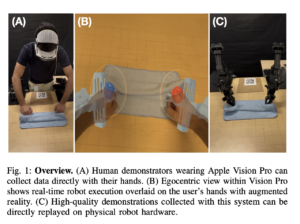Introducing AI’s long-lost twin: Engineered intelligence

Join our daily and weekly newsletters for the latest updates and exclusive content on industry-leading AI coverage. Learn More
We are on the brink of a fourth AI winter, as faith has begun to waver that AI will produce enough tangible value to justify its cost.
As articles from Goldman Sachs and other research institutes fall like so many leaves, there is still time to thwart this next AI winter, and the answer has been right in front of us for years.
There’s something missing
With most scientific disciplines, breakthroughs are made in laboratories, then handed off to engineers to turn into real-world applications.
When a team of chemical researchers discover a new way to form an adhesive bond, that discovery is handed over to chemical engineers to engineer products and solutions.
Breakthroughs from mechanical physicists are transitioned to mechanical engineers to engineer solutions.
When a breakthrough is made in AI, however, there is no distinct discipline for applied artificial intelligence, leading to organizations investing in hiring data scientists who earned their PhD with the aspiration of making scientific breakthroughs in the field of AI to instead try to engineer real-world solutions.
The result? 87% of AI projects fail.
Enter engineered intelligence
“Engineered intelligence” (present participle: “intelligence engineering”) is an emerging discipline focused on real-world application of AI research rooted in engineering — the discipline of leveraging breakthroughs in science together with raw materials to design and build safe, practical value. This creates the capability for domain experts, scientists and engineers to create intelligence solutions without needing to become data scientists.
Leading industrial organizations are starting to reestablish research-to-engineering pipelines, form new partnerships with academia and technology vendors, and create the ecosystemic conditions for AI research to be handed off to intelligence engineers the same way chemical research is shared with chemical engineers.
The result?
Breakthrough applications in tangible use cases that create value, make it into production, and would not have been discovered by data scientists or technology vendors based on data alone.
5 steps to introduce intelligence engineering to your organization
Expertise is the heart of intelligence engineering, expressed as skills — units of expertise, learned through practical application. Theory and training can accelerate the acquisition of skills, but you cannot have skills (and therefore no expertise) without practical experience. Assuming your organization already has experts, these are the five practical steps you can follow to introduce the discipline of intelligence engineering, and how it deviates from the traditional approach to leveraging AI:
The traditional approach to introducing AI (that accounts for the 87% failure rate) is:
Create a list of problems.
Or
Examine your data;
Pick a set of potential use cases;
Analyze use cases for return on investment (ROI), feasibility, cost and timeline;
Choose a subset of use cases and invest in execution.
The intelligence engineering approach for introducing engineered intelligence is:
Create a heatmap of the expertise across your existing processes;
Assess which expertise is most valuable to the organization and score the abundance or scarcity of that expertise;
Choose the top five most valuable and scarce expertise areas in your organization;
Analyze for ROI, feasibility, cost and timeline to engineer intelligent solutions;
Choose a subset of value cases and invest in execution.
Engineering a new wave of value with AI
Once intelligence engineering has been introduced to your organization and the intuitive applications have been developed and put into production, this new capability can be leveraged to extend beyond existing expertise to new opportunities for engineering safe, practical value across the organization and the ecosystem.
As organizations, industries and educational institutions build programs for engineered intelligence, organizations, individuals and our society will reap the benefits of the otherwise unrealized economic and societal potential of AI, creating a new class of jobs and ushering in a new wave of value creation.
Brian Evergreen is author of “Autonomous Transformation: Creating a More Human Future in the Era of Artificial Intelligence.”
Kence Anderson is author of “Designing Autonomous AI. “
DataDecisionMakers
Welcome to the VentureBeat community!
DataDecisionMakers is where experts, including the technical people doing data work, can share data-related insights and innovation.
If you want to read about cutting-edge ideas and up-to-date information, best practices, and the future of data and data tech, join us at DataDecisionMakers.
You might even consider contributing an article of your own!
Read More From DataDecisionMakers













